
The United States Fish and Wildlife Service is an agency of the United States Government within the United States Department of the Interior dedicated to the management of fish, wildlife, and natural habitats. The mission of the agency is "working with others to conserve, protect, and enhance fish, wildlife, plants and their habitats for the continuing benefit of the American people."
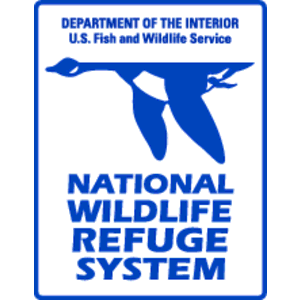
National Wildlife RefugeSystem is a designation for certain protected areas of the United States managed by the United States Fish and Wildlife Service. The National Wildlife Refuge System is the system of public lands and waters set aside to conserve America's fish, wildlife, and plants. Since President Theodore Roosevelt designated Florida's Pelican Island National Wildlife Refuge as the first wildlife refuge in 1903, the system has grown to over 568 national wildlife refuges and 38 wetland management districts encompassing more than 150,000,000 acres (607,028 km2).

Oenothera is a genus of about 145 species of herbaceous flowering plants native to the Americas. It is the type genus of the family Onagraceae. Common names include evening primrose, suncups, and sundrops. They are not closely related to the true primroses.
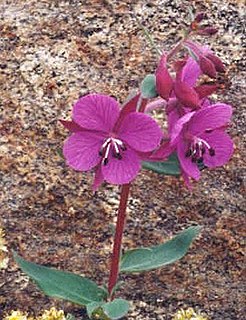
The Onagraceae are a family of flowering plants known as the willowherb family or evening primrose family. They include about 650 species of herbs, shrubs, and trees in 17 genera. The family is widespread, occurring on every continent from boreal to tropical regions.

The Delhi Sands flower-loving fly is a species of mydid fly in the genus Rhaphiomidas. It was the first fly added to the Endangered Species List in the United States.

The Anastasia Island beach mouse is a subspecies of the oldfield mouse of the southeastern United States. It occurs in the sand dunes of Florida and Alabama beaches. It has been classified by the United States Fish and Wildlife Service as an endangered species due to the specificity of its habitat and the natural and human-induced destruction thereof.

Apodemia mormo langei, the Lange's metalmark butterfly, is an endangered North American butterfly. It is a subspecies of the Mormon metalmark and belongs to the family Riodinidae. The butterfly is endemic to California, where it is known from one strip of riverbank in the San Francisco Bay Area. A 2008 count estimated the total remaining population at 131 individuals. Since 2011, this number has dropped to about 25–30.

Arctostaphylos glandulosa, with the common name Eastwood's manzanita, is a species of manzanita.

Erysimum menziesii is a species of Erysimum known by the common name Menzies' wallflower.

Oenothera deltoides is a species of evening primrose known by several common names, including birdcage evening primrose, basket evening primrose, lion in a cage, and devil's lantern. It is native to the Southwestern United States and northern Mexico, where it grows in sandy habitats from desert to beach.

The Loch Lomond Vernal Pool Ecological Reserve is a nature reserve of 8.22 acres (33,300 m2) in the community of Loch Lomond in Lake County, California. It is one of 119 ecological reserves managed by the California Department of Fish and Game (CDFG). The ecological reserve system was authorized by the state legislature in 1968 for the purpose of conservation and protection of rare plants, animals and habitats.
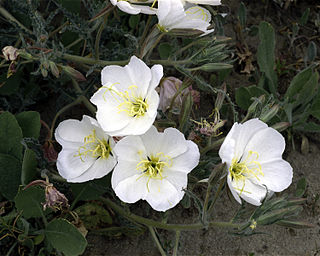
Antioch Dunes National Wildlife Refuge is a sensitive sand dune habitat located near the city of Antioch, California on the south shore of the San Joaquin River-Stockton Deepwater Shipping Channel. It serves as a refuge for three endangered species of plants and insects, and is closed to the public except for tours and events supervised by Refuge staff. The Refuge was established in 1980. It is managed by the U.S. Fish and Wildlife Service.
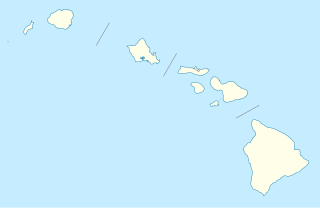
The Pearl Harbor National Wildlife Refuge is a National Wildlife Refuge on the island of Oʻahu, Hawaii. It was created in 1972 to mitigate the wildlife resource disturbances caused by construction of the Honolulu International Airport Reef Runway. The Refuge includes three units, the Honouliuli, Waiwa and Kalaeloa. The Honouliuli and Waiawa Units are managed under a cooperative agreement with the United States Navy. The Kalaeloa Unit was established during Base Realignment and Closure proceedings in 2001. Through these cooperative efforts with the Federal Aviation Administration, the State of Hawaii, and the U.S. Navy, the U.S. Fish and Wildlife Service made Pearl Harbor NWR a reality.
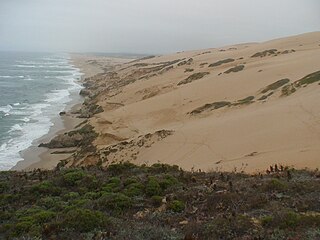
The Guadalupe-Nipomo Dunes National Wildlife Refuge is a 2,553-acre (10.33 km2) protected area located along the Central Coast of California, in southern San Luis Obispo and northern Santa Barbara Counties.

Humboldt Bay National Wildlife Refuge is located on Humboldt Bay, on the California North Coast near the cities of Eureka and Arcata. The refuge exists primarily to protect and enhance wetland habitats for migratory water birds using the bay area, including tens of thousands of shorebirds, ducks, geese, swans, and the black brant. Humboldt Bay National Wildlife Refuge, along with other public and private lands around Humboldt Bay, is one of the key stopovers for the millions of migratory birds that rely on the Pacific Flyway. More than 200 bird species, including 80 kinds of water birds and four endangered species, regularly feed, rest, or nest on the refuge or other areas around the bay.

Oenothera californica, known by the common name California evening primrose, is a species of flowering plant in the evening primrose family.

Oenothera primiveris is a species of flowering plant in the evening primrose family known by the common names yellow desert evening primrose, bottle evening-primrose, and desert evening-primrose.

Oenothera pilosella is a species of flowering plant in the evening primrose family known by the common name meadow evening primrose. It is native to the United States and eastern Canada.



















